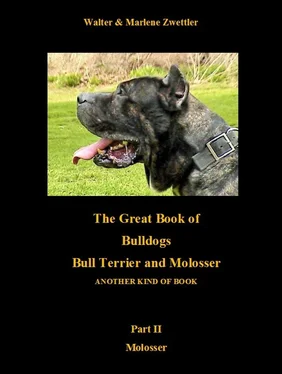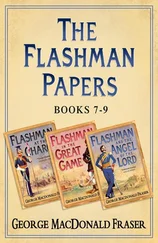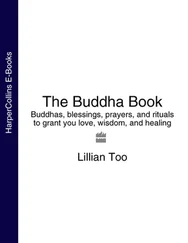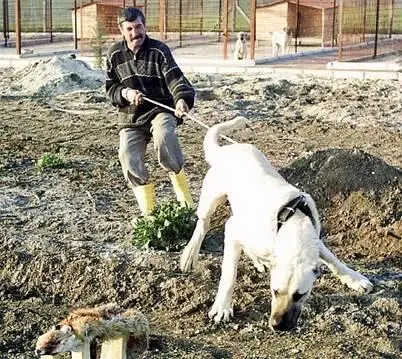

Yagmur (sister of Yagiz), owner Mehmet Yalcin, Ankara
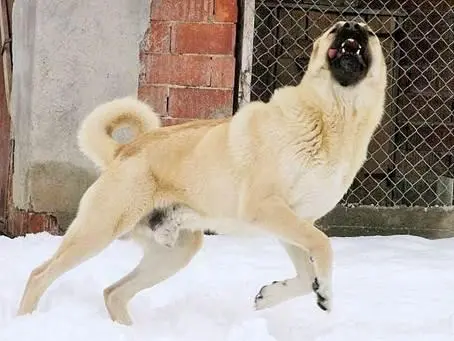
Yagiz in action
Among the Turkish breeds, the Kangal is least of all aggressive and easy to train; he is an excellent family pet. He doesn’t get along well with other dogs. He is very territorial and protective to his family.

Herkul Boz, Boz Kennel, Istanbul
The Kangal is of a very large size and massive, with a strong neck, big head and a muscular body. The coat is dense, rough and short, preferred colors are reddish, beige and pale, always with a black mask. The average height is about 32 inches.
The Kangal runs very fast and elastic, he is an excellent wolf killer and a wonderful guard dog. In his native country he is often seen with cropped ears and his very big teeth distinguishes him from other dogs in the region, therefore the Kangal would be first choice of many Turkish shepherds for guarding their herds.
The wolves are only hunted by the Kangals, when they come too close to the herds, the houses or the owners; otherwise both parties go their own way. The Kangal isn’t an aggressive dog; he only would defend his property.
Even though he would see several wolves, he doesn’t run away, so that it often would end with his own dead. Therefore the Turkish owners are very proud of their Kangals, who are able to kill wolves. Only the best lines are strong and intelligent enough to be a match for wolves. Sometimes the dogs would chase the wolves after an attack in the mountains to kill them. They have an extreme hunting drive, but the shepherds prefer lines, which don’t leave the herds alone in the “ardor of action”, but would return to the herds after having chased away the wolves.
Following pictures we’ve got at our disposal by Ender Odaci . The pictured Kangals derives from the so called “ Panterline ”. This line has been bred by the family Cicek in Kangal/ Kargakale. It is one of the best and it is most important that the family has kept the line pure for decades, and even centuries.
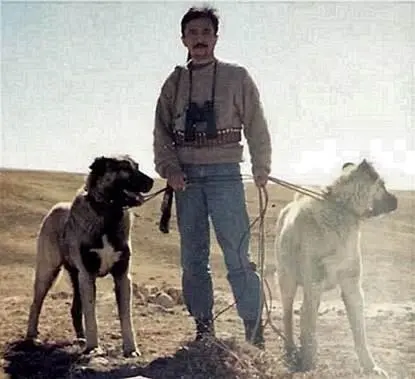
Panter & Seytan with their owner Savas Cicek, Turkey
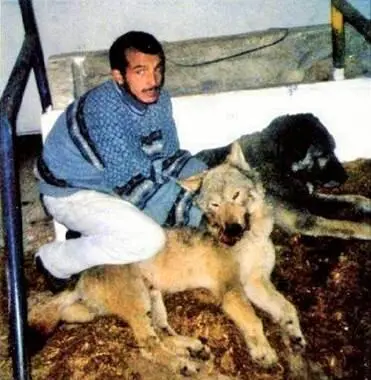
Old Panter with wolf - Panter is already dead, he was a true Kangal-King
Breeder: S. Cicek, owner: Onur Kanli, Turkey

Ashil, a son of Panter, looking for wolves
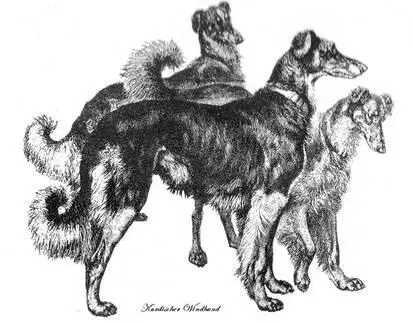
Kurdish Sighthound
The Kangal is also called Anatolian Mastiff, being especially visible with the yellow specimens with black mask. In fact, there exist some strains which not only distinguish in their external look from the usual herding dog, but also have an extreme hunting drive. They not only would protect and guard the herd and the home, but will try to make sight of the enemy (wolf, bear) from distance. Mostly they wouldn’t only confine to defend the herd when attacked, but would go to chase actively the predator. That’s often to the regret of the shepherds, as many are lost. It’s obvious that beside the mastiff-like shepherd dog, a sighthound might have played a significant role. In fact, always again the Kurdish Sighthound is mentioned. He is described as a courageous dog, which shall have influenced the Borzoi too. Unfortunately, there can’t be found any useful photos, except the one shown below. He is said to have a yellow or dirty white color, and to have been an excellent wolf hunter. Looking at this picture of the Kurdish Sighthound, a certain similarity of the shown Kangals of the Panterline could be noticed. This could be also an explanation for the Kangal’s kind of sight hunting and his fierce chase of the wolf.
In contrast to other herding dogs of his category, in spite of his enormous weight the Kangal looks higher and more extended, with a somewhat narrower chest, in all more sinewy and dryer. Real strong teeth and extreme muscles on the neck round the whole.
ARMENIAN SHEPHERD (GAMPR/GAMPYR)
he Armenian Shepherd is said to be the eldest of all Molossers and probably of the mountain dog breeds too. Armenia has been one of the early cradles of civilization and the Gampr shall have existed in the Armenian highlands from the beginning. Already 3000 years ago two main strains developed – the long haired and the short haired strain. Most Armenians regard these dogs as the true Caucasian and Middle Asian Shepherds and as direct ancestors of the most Asian and Turkish breeds. This theory isn’t popular, however makes sense, regarding the historical facts. When the Turks have invaded Armenia in the 9 thcentury and have met the Gampr dogs, they have been impressed in such a way that they have taken many of them to the Turkey. There exist even some reports, in which is stated that some of their Gampr dogs have been exported in a “monastery in the Suisse Alps” around 1665. There they shall have contributed to the development of the St. Bernard. The Soviets claimed for themselves the Gampr as a Russian breed, at which the Georgian strain has been preferred by Stalin, still today the consequences divide the fanciers of the Caucasian Ovcharka. The Turkish Cars Dog is of a special interest too, because Cars has been the capital of Armenia until the 10 thcentury. Still today he is used and high esteemed by the shepherds in the northeast of the Turkey. Some also regard the Gampr as the ancestor of the legendary Alaunt.
There exists no standard, as these dogs are bred for work and not for their appearance until today. There is made no difference between the short haired and the long haired in Armenia. The Gampr has been bred on natural/accidental kind for centuries; all strains have been crossed so that the appearance, even in one litter, often differs. Ears and tail are traditionally cropped with the short haired strain; however that differs from place to place.
Therefore, the Gampr can be short and long haired, there are all varieties of colors and different sizes which ranges from 24 to 32 inches.
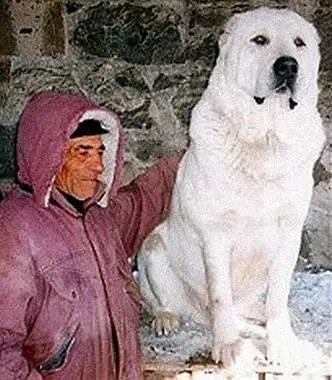
Armenian Gampr
Читать дальше
